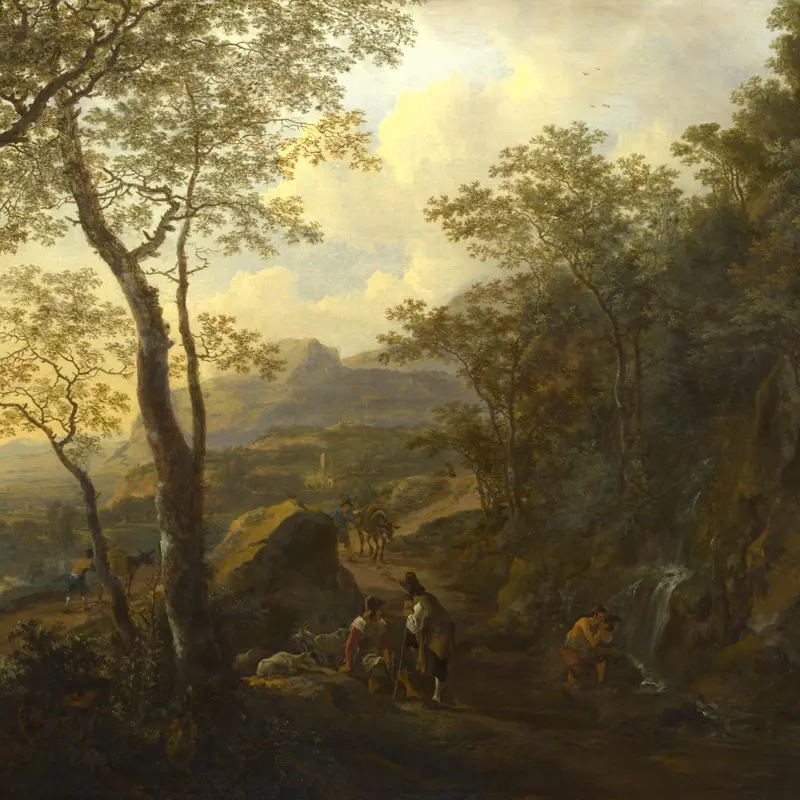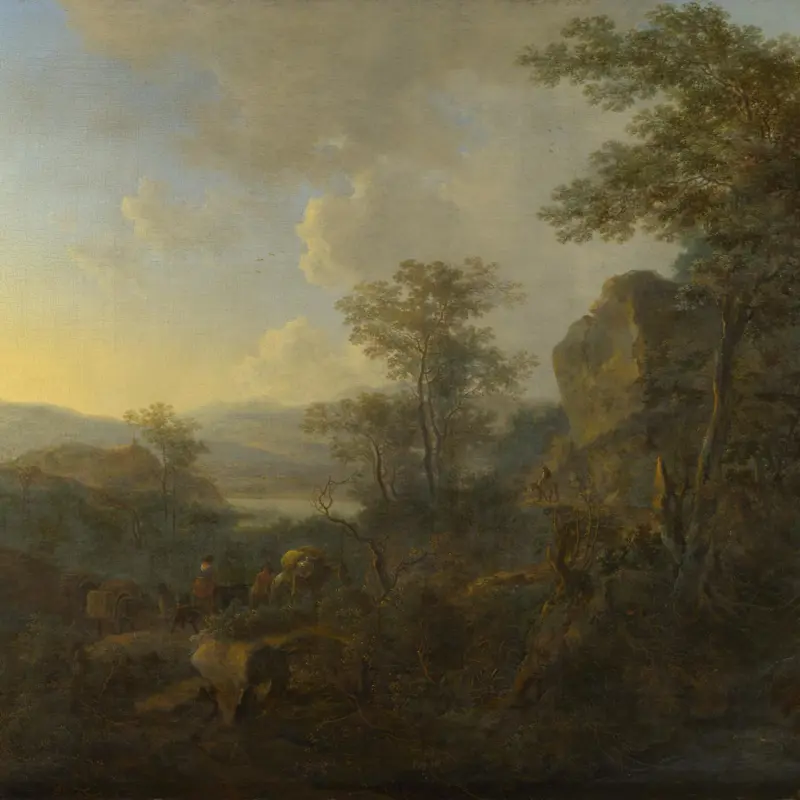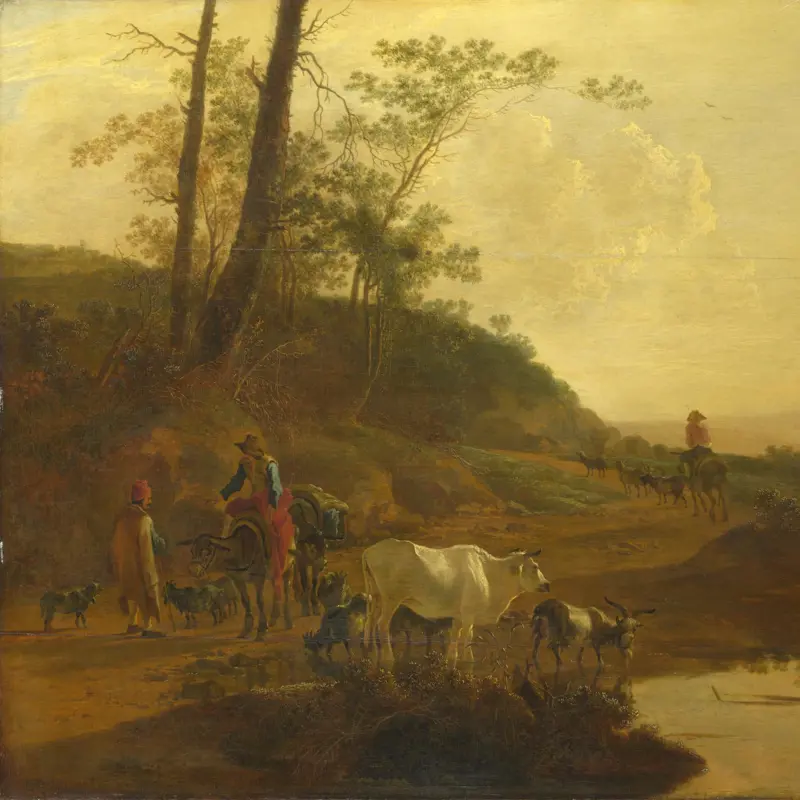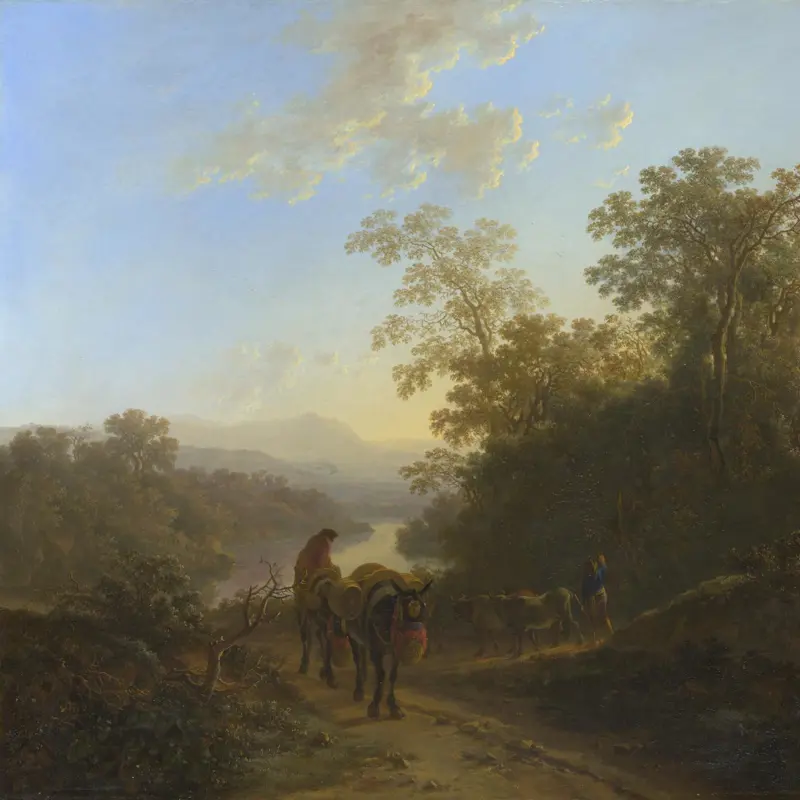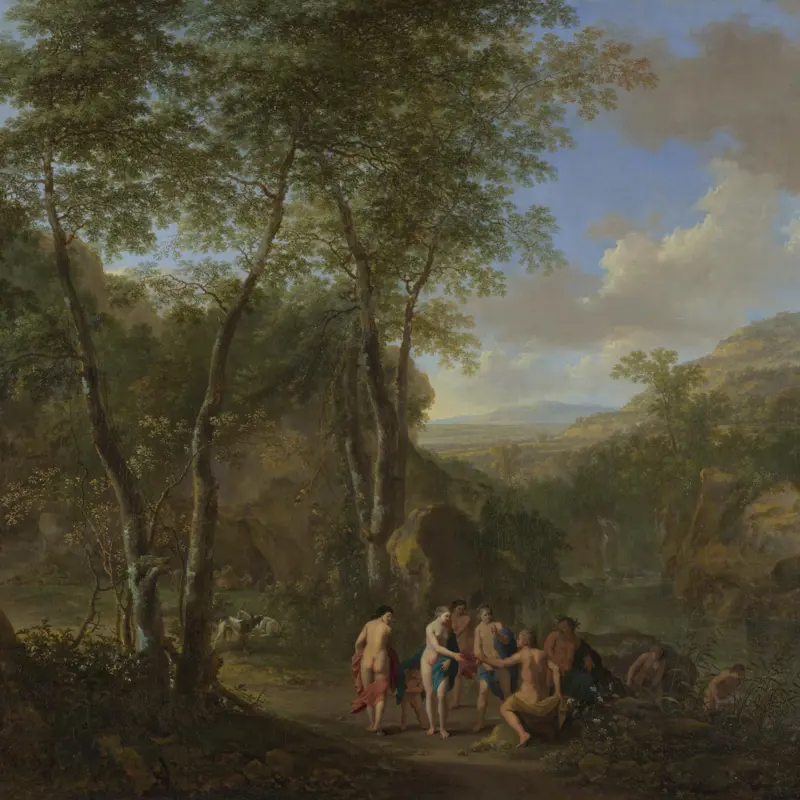Jan Both, 'A View on the Tiber', about 1641
About the work
Overview
Jan Both was one of a group of Dutch artists that made the long and often dangerous journey across the Alps to Italy, said at the time to be the heart of great painting. He stayed for ten years, becoming a leader in the development of Dutch Italianate landscape showing hardy peasants against softly glowing skies.
This painting is unusual for Both. He shows an urban view of architecture rather than a landscape and his view of the Ripa Grande – the old port of Rome – is partly imaginary. In his other paintings from a different viewpoint the scene is more recognisable. It seems that in painting this picture on his return to the Netherlands, Both is painting partly from memory and partly from imagination, but always with affection for the sunlit land he had left.
Key facts
Details
- Full title
- A View on the Tiber, near the Ripa Grande, Rome(?)
- Artist
- Jan Both
- Artist dates
- about 1615 - 1652
- Date made
- about 1641
- Medium and support
- oil on wood
- Dimensions
- 42.1 × 55 cm
- Inscription summary
- Signed
- Acquisition credit
- Wynn Ellis Bequest, 1876
- Inventory number
- NG958
- Location
- Room 27
- Collection
- Main Collection
- Previous owners
Provenance
Additional information
Text extracted from the ‘Provenance’ section of the catalogue entry in Neil MacLaren, revised and expanded by Christopher Brown, ‘National Gallery Catalogues: The Dutch School: 1600–1900’, London 1991; for further information, see the full catalogue entry.
Exhibition history
-
2014Hot Spot Rome. Sébastien Bourdon's Munich: Lime KilnBayerische Staatsgemäldesammlungen13 February 2014 - 18 May 2014
Bibliography
-
1907C. Hofstede de Groot, Catalogue Raisonné of the Works of the Most Eminent Dutch Painters of the Seventeenth Century, 10 vols, London 1907
-
1907C. Hofstede de Groot, Catalogue Raisonné of the Works of the Most Eminent Dutch Painters of the Seventeenth Century, 10 vols, London 1907
-
1960Maclaren, Neil, National Gallery Catalogues: The Dutch School, 2 vols, London 1960
-
1982D. Gordon, The National Gallery Lends: Paintings of the Warm South by Foreign Painters in Italy in the Seventeenth Century (exh. cat. Herbert Art Gallery, 13 March - 25 April 1982; Derby Art Gallery, 8 May - 12 June 1982; Doncaster Museum and Art Gallery, 19 June - 25 July 1982; Victoria Art Gallery, 6 August - 4 September 1982), Coventry 1982
-
1983G. Briganti, L. Trezzani and L. Laureati, The Bamboccianti: The Painters of Everyday Life in Seventeenth-Century Rome, trans. E. Wolf, Rome 1983
-
1988D.A. Levine, 'The Roman Limekilns of the Bamboccianti', Art Bulletin, LXX, 1988, pp. 569-89
-
1988A.C. Steland, 'Beobachtungen zu frühen Zeichnungen des Jan Both und zum Verhältnis zwischen Jan Both und Jan Asselijn in Rom vor 1641', Niederdeutsche Beiträge zur Kunstgeschichte, XXVII, 1988, pp. 115-38
-
1990B. Aikema and B. Bakker, Painters of Venice: The Story of the Venetian Veduta, (exh. cat. Rijksmuseum, 15 December 1990 - 10 March 1991), The Hague 1990
-
1991Maclaren, Neil, revised by Christopher Brown, National Gallery Catalogues: The Dutch School, 1600-1900, 2nd edn (revised and expanded), 2 vols, London 1991
-
2001
C. Baker and T. Henry, The National Gallery: Complete Illustrated Catalogue, London 2001
About this record
If you know more about this work or have spotted an error, please contact us. Please note that exhibition histories are listed from 2009 onwards. Bibliographies may not be complete; more comprehensive information is available in the National Gallery Library.

